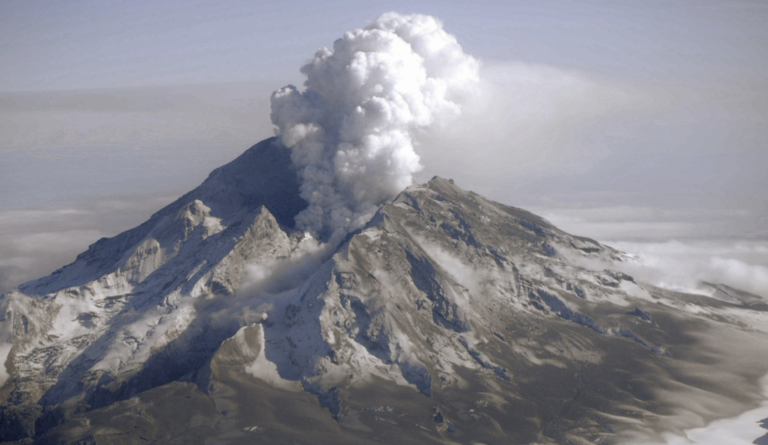Using satellite data from NASA’s Moderate Resolution Imaging Spectroradiometers (MODIS) – instruments aboard NASA’s Terra and Aqua satellites – scientists have developed a new method to predict volcanic eruptions months, or even years, in advance.
Scientists at the NASA’s Jet Propulsion Laboratory in Southern California and the University of Alaska, Fairbanks, studied 16.5 years of radiant heat data from MODIS for several types of volcanoes that have erupted in the past two decades. They found that in the years leading up to an eruption, the radiant surface temperature over much of the volcano increased by around 1°C from its normal state. It decreased after each eruption.
Scientists believe that the heat increase may result from the interaction between magma reservoirs and hydrothermal systems. Magma contains gases and other fluids. When it rises through a volcano, the gases diffuse to the surface and can give off heat. Similarly, this degassing can facilitate the up-flow of underground water and the elevation of the water table, as well as hydrothermal circulation, which can increase soil temperature.
“The new methodology is based on a subtle but significant increase in heat emissions over large areas of a volcano in the years leading up to its eruption,” said lead author Társilo Girona, formerly of JPL and now with the University of Alaska, Fairbanks. “It allows us to see that a volcano has reawakened, often well before any of the other signs have appeared.”
Scientists are now testing the thermal time series method on more volcanoes and will continue to fine-tune its precision. “One of the goals is to one day have a tool that can be used in near real-time to check for volcanic activity in volcanic areas,” said Girona. “Even for small eruptions, there is evidence of thermal unrest before the initiation of the eruption event, so the new method helps bring us a little closer to that goal.”
This research was recently published in Nature Geoscience.



